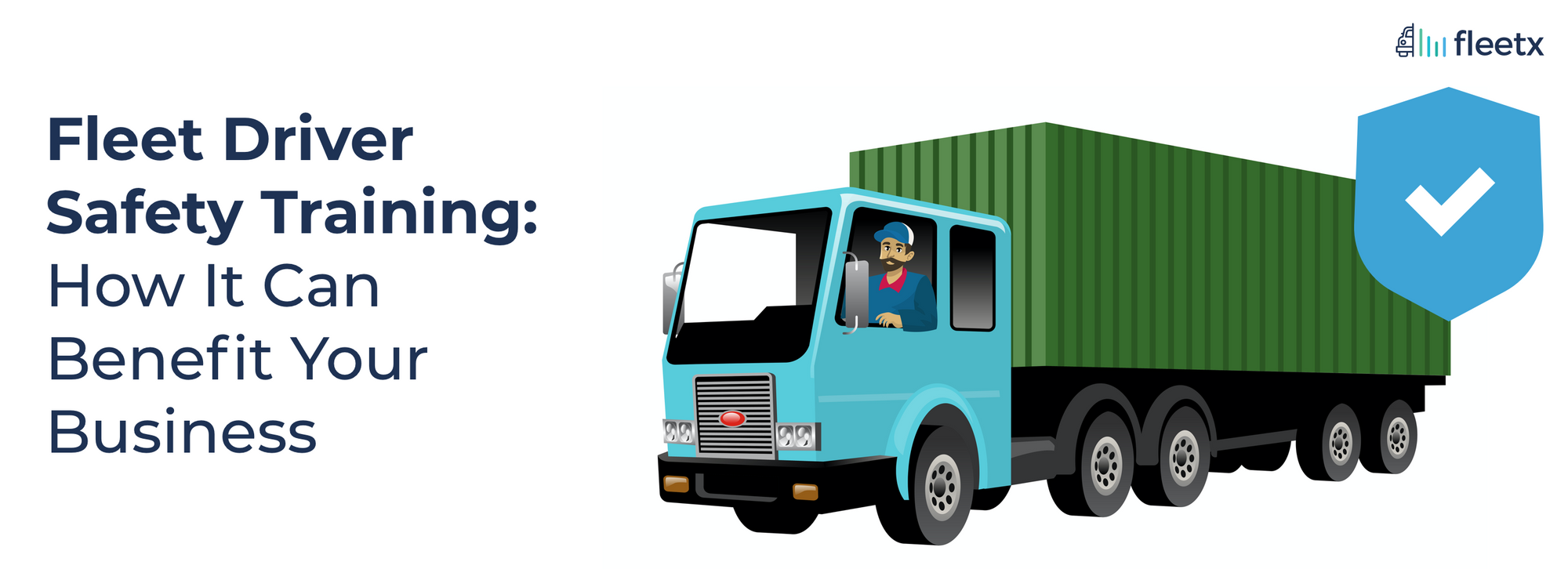
As a key part of your organisation, your drivers need to be skilled and competent at their job. They represent your company and are the ones that deal with customers on a daily basis. They will determine how your company is perceived, and can make or break your business. Risky driver behaviour can cost your organisation a lot of money, time and resources if this is a recurring problem. Some of Fleetx’s products are geared towards improving driver performance through technological solutions, but making them undergo training for their personal skills will benefit both your organisation, as well as your drivers.
Driver training should include a period at the time of their onboarding, followed by regular training and development programs during their time at your organisation. Training is essential for teaching safety skills to new drivers and should be part of an ongoing strategy. Maintaining a safe fleet requires regular effort, and there is no one solution for improving drivers skills and behaviour.
For safety training to be effective, it should ideally be supported by other actions related to fleet management. These include:
- Management and motivation of drivers through supervision, coaching and leadership
- Effective organisation and allocation of work
- Vehicles should be well maintained and safety checks should be carried out regularly because good drivers don’t belong in badly maintained vehicles!
Designing an effective training program
To start things off, you will need to build a fleet safety program that specifically addresses your organisation’s needs. To do this, you need to have a good understanding of the current risks associated with your drivers, vehicles and daily operations. Using fleet analysis tools to analyse historical data relating to accidents, theft, and poor behaviour will help you conduct your risk assessment.
Developing a full profile of your drivers’ behaviour and their individual skill level will allow you to be more effective and proactive in your training efforts. For example, analysing information on speeding or harsh braking will help you understand what kind of interventions are needed to reduce accidents, and identify the drivers that require this training.
After identifying the problems, establishing performance indicators or benchmarks will help you understand your current situation better, and visualise the way forward.
Fleet management software is a great support tool for training programs because it allows you to store all driver related information in one place, and track their progress through regular reports. This information can be used to generate risk profiles and highlight potential training needs in the future.
Choosing an effective training approach is the next important step. There are a variety of training methods to choose from, and each of them have their advantages as well as disadvantages. To help you make this decision, we’ve compiled them into a list.

- Group sessions and training workshops: A cost-effective method that allows you to train a lot of people at the same time. This method can be used to address common challenges like first-aid training or understanding road regulations. This method is not suitable for individual driver specific challenges, they are ideally suited to onboarding training.

- Online training programs: This is also a comparatively inexpensive solution and can be created to address individual concerns. Scheduling becomes easy, and these sessions can be divided into modules that can be completed over a period of time. They are useful for ongoing training, or remedial training in the event of an accident. However, your drivers need to be able to access the internet and feel comfortable attending these online sessions. If not executed properly, they will not make an impact.

- On-road training: This method is especially effective for sessions on vehicle handling and road safety. It is also useful for training drivers on specialised vehicles and equipment. During these sessions, the instructor can work with the driver one-on-one to effectively convey the required knowledge. The disadvantage of this method is that it can be time consuming and expensive, especially if you have a large fleet.

- Driver coaching: This method of training can be used for post-incident reviews, and can be supplemented by data collected through the telematics systems. It can help you and your driver reflect on the cause of the event, identify the events leading up to it and lead to a better understanding of why it happened. This will help in improving decision making skills for the future. However, this is also a time consuming and expensive process.
Onboarding training
While processing new recruits, driving related training should be an integral part of the onboarding process. This can include sessions on the drivers handbook, road safety regulations, getting familiar with their future vehicles, vehicle controls and safety features. Drivers can also be briefed on relevant organisational challenges like theft, security procedures, etc.
This initial training, if carried out well, can address essential aspects of their role and the risks involved. These can cover:
- Defensive driving
- Tiredness and fatigue management
- Self-awareness on-road
- First aid training
- HIV/AIDS awareness camps (in high risk environments)
Ongoing training
These follow-up training sessions should be informed by regular driver assessments and company requirements. Monitoring your drivers performance with the help of fleet management software will allow you to create and adjust your training programs according to the need of the hour. This additional training can build on the training received during onboarding, and can help your drivers practice these skills. It is recommended to carry out refresher courses after a fixed period. These can include:
- Economic driving practices
- Defensive driving skills
- Fatigue and tiredness management
- New vehicle and equipment handling
Driver development
Invest in your drivers’ development! You can create a program that allows drivers to graduate several steps, which correspond to higher skill levels and responsibilities in the organisation. This could be in the format of a graduated progression from bronze to silver to gold standard driver for example. Gold standard drivers can be expected to have a higher level of technical knowledge than employees that drive for daily work purposes.
Promotions from one level to another can be awarded on the basis of (for example) an accident free record, or passing specific training courses. A system like this will also incentivise your drivers to develop their skills and rise to higher positions within your organisation.
Benefits of driver safety training programs
Implementing driver safety programs can bring significant improvements to your business. Working with an established fleet management company like Fleetx can provide your business with support in setting up your driver safety program, and can ensure that you benefit from these training courses. Here are a few of these benefits to get you started:

- Reduce risk of accidents and injuries: The cost of a single accident can set your business back by quite a large amount. Medical expenses, legal fees, property damage and increases in health and disability insurance premiums account for a large percentage of these expenses. Driver safety programs are an investment in the safety of your own employees, as well as that of the people who share the road with your drivers.

- Higher productivity: Fewer accidents and injuries on the road means decreased downtime and improved productivity throughout your organization. Through driver training programs, you can significantly reduce the number of accidents that take your drivers and vehicles off the road.

- Establish clear organisational guidelines: Making your drivers undergo training will ensure that they are aware of their responsibilities, and expectations while they are on the road. These can include guidelines on vehicle health, prohibition of alcohol or drugs while driving, safety regulations, etc.

- Lower insurance costs: Some insurance companies offer discounted rates for organisations that implement driver safety training and monitoring systems for their vehicles. Whether you have a small or large fleet, the savings will be substantial over time.

- Job satisfaction: The knowledge and skills acquired during driver safety training courses can be applied by your drivers both on and off the job. By investing in these advanced training opportunities, your company indicates its commitment to its employees and their safety. This can boost morale throughout your organisation, and ensure that your drivers feel valued for their work.
The bottom line:
If you want to understand how fleet management software like Fleetx can help keep your drivers and vehicles safe, please reach out to our team for a chat! We can discuss your organisational goals, identify gaps and find the solutions that will help you fill them.
Safe travels!



